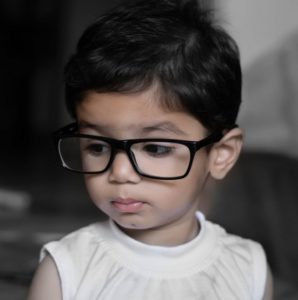 Reports estimate that one in four students in grades K-6 have vision-related problems; and 80 percent of what a child learns in school is presented visually. The visual system matures rapidly during the first few years of life and it’s important to identify any problems that may interfere with normal cognitive and visual development. When addressed early in life, these problems can often be rectified.
Reports estimate that one in four students in grades K-6 have vision-related problems; and 80 percent of what a child learns in school is presented visually. The visual system matures rapidly during the first few years of life and it’s important to identify any problems that may interfere with normal cognitive and visual development. When addressed early in life, these problems can often be rectified.
“But, my child passed all the school vision screenings,” you say. Vision is more than 20/20, which is simply the ability to see at 20 feet what a person should be able to see at 20 feet. 20/20 is what most people think of as “perfect vision,” and this is what the typical school vision screening program tests for. However, it is just one of the many visual skills required for optimum learning. If any of these skills are inadequate or lacking, it will be harder for your child to be an efficient learner.
So, why don’t children scream for help? “I can’t see!” The answer may be simple, they just don’t know they aren’t viewing the world the way everyone else does. They, their parents or their teachers may think they are lazy, stupid, clumsy, slow – you name it. Sure, they may see; but do they “see and process” the information correctly? Try learning while seeing squiggly lines, print that splits into double images, or words that don’t stay in one place. These are just a few of the roadblocks to learning that these children might face, and no one may even know about it.
One of the most common problems we see is amblyopia (often mistakenly called lazy eye). It results when the eye and the brain do not communicate properly. This causes the visual system to not fully mature, which results in visual impairment. In other words, amblyopia is a developmental condition, and not just an eye problem. Parents are often surprised when a child is diagnosed with amblyopia because children usually have no complaints.
Here are some complaints that your child may have:
• Frequent headaches
• Rubbing their eyes
• Often loses their place when reading
• Turns or tilts their head, using one eye only
• Holding material closer to their face than is normal
• Confuses or skips over smaller words entirely when reading
• When reading or writing, reverses words by accident frequently • Has a consistent record of poor school performance .
A comprehensive eye examination can test for these and other problems. Our team will assess visual acuity, refractive status, ocular health, eye tracking, eye focusing and eye teaming, to name a few. Visual acuity measures how clearly a child sees objects or letters. Refractive status measures for nearsightedness (myopia), farsightedness (hyperopia) and astigmatism. The child is evaluated for any eye health problems, including congenital anomalies. Eye tracking is the ability of the eyes to fixate and smoothly follow objects or printed words. Eye focusing is the ability to efficiently change and sustain focus while reading. Eye teaming is the ability to coordinate both eyes accurately and without fatigue or excessive effort. It is required to see in 3D.
We recommend a comprehensive eye exam for every child before he or she enters school usually by three and again at five, then every two years after that. For children to perform their best, they need to see and process the world around them efficiently. Give your child the leg up. Make sure children are prepared for school this year by ensuring that they see what they need to see. All of our eye doctors perform comprehensive eye examinations for all ages and we would love to help in any way we can. FBN
By Rebecca McQuivey
Visit us at eyecareassociatesonline.com to learn more about your family’s eye health.
Rebecca McQuivey is the marketing manager for Eye Care Associates, 940 N Switzer Canyon Dr., # 101, Flagstaff, Ariz., 86001. She can be reached at 928-774-7949 or eyecareassociatesonline.com.







